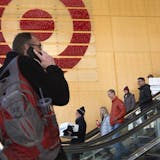The Rev. John Ubel is the rector of the Cathedral of St. Paul and the pastor of its congregation — jobs that don't often go together in the Roman Catholic Church, which tends to treat its cathedrals like museums and rectors like curators.
But while caring for a national shrine displaying gorgeous art and architecture is important, the historic church is also a spiritual home to more than 1,000 families. Its pastor has no desire to make it a museum.
Eye On St. Paul recently sat down with Ubel, a St. Paul native, to talk about the responsibility he feels caring for the city's most famous place of worship. This interview was edited for length.
Q: Father, what is your official title?
A: Rector of the Cathedral of St. Paul.
Q: How is being a rector different from being pastor of a parish?
A: My assignment letter lists both: Rector of the cathedral and pastor of the cathedral parish. In church law, technically, rector is a word for someone who is in charge of a church that isn't a parish. There are a lot of cathedrals in the world that actually aren't functioning parish churches. They're merely the building where the bishop has the chair and major ceremonies.
Q: How many parishioners do you have at the cathedral?



